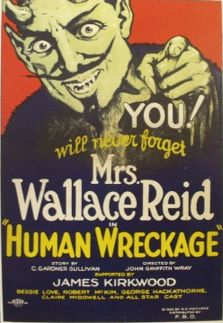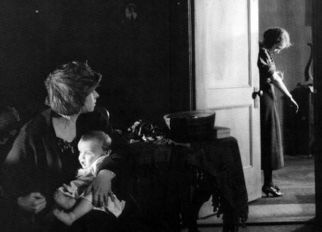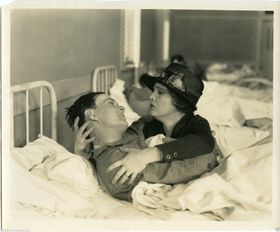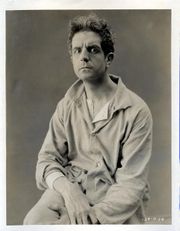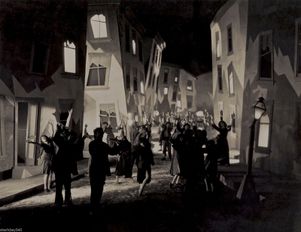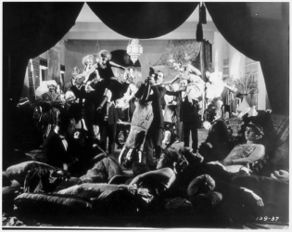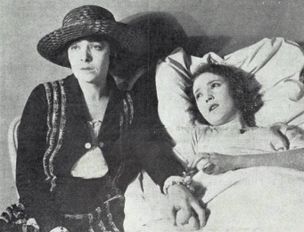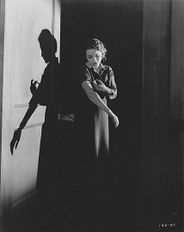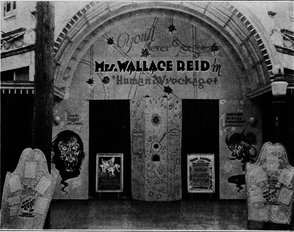Human Wreckage (lost American propaganda film; 1923)
Human Wreckage is an American silent propaganda drama film starring Dorothy Davenport released on June 17th, 1923. The film was directed by John Griffith Wray, and was distributed by Film Booking Offices of America.[1] The film was made to show the dangers of drug addiction, and was independently made. Davenport, who's husband (Wallace Reid) was addicted to morphine after an injury, would show the film across the country herself.
Plot
Jimmy Browne (George Hackathorne), a drug addict, is arrested after robbing a store. Jimmy's friend Mary (Bessie Love), another addict, goes to Ethel MacFarland (Dorothy Davenport), who's husband, Alan works as an attorney. With the help of Alan's defense, Jimmy is acquitted and is sent to a sanitarium for treatment. Alan, stressed out from work, suffers a breakdown, and goes to his doctor, who prescribes him narcotics.[2]
Alan soon becomes addicted, and is eventually blackmailed by friends of Steve Stone (Harry Northrup), the leader of the drug ring, to help acquit him, which he does. Alan goes to Ethel, begging for help with his addiction, and quits for good once he fears Ethel is also becoming lured to drugs. Alan goes on to lead a campaign against drugs, including introducing stronger laws to help combat the drugs. Steve attempts to flee, and catches a taxi, driven by a now clean and reformed Jimmy. Jimmy realizes who his passenger is, and drives his taxi into a train, killing them both in the process.[3][4]
Availability
The film, which ran around 80 minutes, is thought to be lost. It was released around the time the Hays Code was first proposed, which included a ban on any reference to drugs in film. The film however, was allowed due to it's anti-drug message. In 1924, the film was banned by the British Board of Film Censors, likely due to the drugs reference throughout the film.
No footage has survived from the film, though stills and publicity shots have survived to this day.
Gallery
External Links
References
- ↑ Silentera page on the film. Retrieved 27 Jun '21
- ↑ A newspaper clipping describing the plot details. Retrieved 27 Jun '21
- ↑ The film's synopsis from Allmovie. Retrieved 27 Jun '21
- ↑ The film's synopsis from AFI. Retrieved 27 Jun '21
